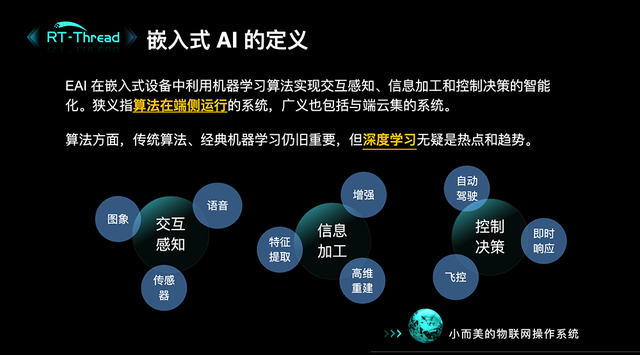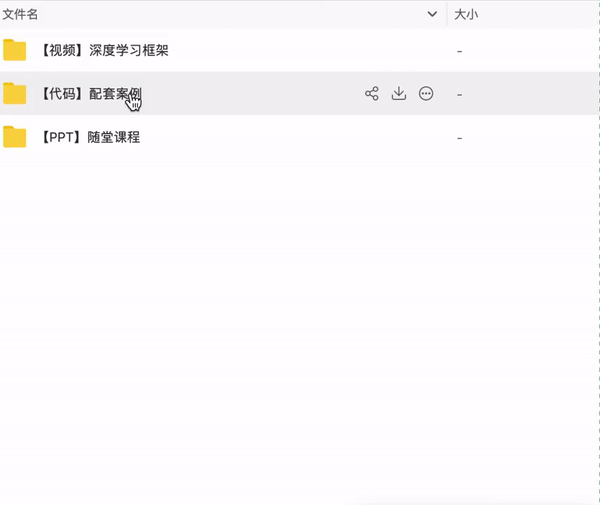The essence of the windfall is actually a temporary imbalance between talent supply and demand. In simple terms, due to abrupt changes in the industry, sharp capital quickly enters, leading to massive industry expansion in a short time, requiring a large number of developers.
Currently, embedded development is increasingly leaning towards intelligence, which we refer to as smart hardware (hardware + software).
Taking Baidu’s robot as an example, the core of the robot is its brain, which is the “data and algorithms” but in order for the robot’s brain to enable the robot’s body to move like a human, to speak fluently, and to walk freely, it must rely on embedded technology.
Although artificial intelligence has been booming in recent years, its real business landing stage is in the IoT edge AI embedded field, which has a vast array of application scenarios.

Therefore, with the promotion of the Internet of Things and strong artificial intelligence, embedded systems will welcome more development opportunities in the next 5-10 years. On one hand, embedded development will see more application scenarios; on the other hand, the technical system of embedded development will gradually enrich, thus expanding the technical boundaries of IoT development.
Currently, many AI frameworks have begun to support edge AI, such as Google’s TensorFlow Lite and TensorFlow Lite Micro, as well as Huawei’s MindSpore Lite. Chip manufacturers ST and NXP have also launched some tools and demos aimed at edge AI.
In such a historical context, I have three suggestions for technical personnel engaged in embedded development to enhance their workplace value: to improve their own workplace value:
-
Further enrich your knowledge structure, focusing on artificial intelligence technology;
-
Pay attention to the accumulation of industry experience, as embedded development has many connections with industry sectors (in the future, embedded development will gradually cover traditional industries);
-
Focus on relevant technologies in the industrial internet field.
I recently organized a set of essential learning materials for AI beginners, highly recommended for everyone to study, by author Wang Xiaotian, who has 8 years of practical experience in the field of artificial intelligence and is currently employed as a senior technical expert in AI algorithms at one of the BAT companies, a dual master’s graduate from a top 3 university in France (in computer science and applied mathematics).
He has published more than 10 papers in the fields of artificial intelligence and chips, with a solid academic background and rich project and business landing experience.
During his work, he is mainly responsible for algorithm work related to computer vision (CV) and natural language processing (NLP) in the AI business line, promoting core algorithm research and optimization for human-machine hybrid intelligence, semantic segmentation, machine translation, iris recognition, and other modules. He has in-depth research on image classification, object detection, target tracking, autonomous driving, and computer architecture.
He possesses both theoretical and practical experience, fully understanding the pain points of learners. To be honest, it is rare to find someone with such qualifications.
(The content is extensive, only part of it is excerpted)

This tutorial has been recommended by many industry insiders. Although I have been in this industry for many years, I can still find gaps and gain a lot when reviewing this tutorial. I believe that whether you are a beginner in AI or already have some work experience, this learning material is worth studying seriously.
All the above-related content has been packaged and compiled into a Baidu Cloud link. A thoughtful touch is that for those who have not purchased a Baidu Cloud membership, you can download at a speed of 2MB+/S, and I have specially prepared a download tool for everyone.
👇 Long press the QR code below for 2 seconds
To receive immediately

Next, I will detail how to study this material.
First, to enter the world of AI, mastering a deep learning framework is one of the essential survival skills.
Therefore, the tutorial will start with learning deep learning frameworks, taking you from zero to training networks, enabling you to independently build and design convolutional neural networks (including mainstream classification and detection networks), and perform training and inference of neural networks (involving multiple mainstream frameworks such as PyTorch, TensorFlow, Caffe, Mxnet), allowing you to master various deep learning open-source frameworks through practical experience.
Here is an excerpt of the framework learning content directory for everyone to feel.
Deep Learning and Neural Networks
-
Introduction to Deep Learning
-
Basic Deep Learning Architecture
-
Neuron
-
Detailed Explanation of Activation Functions (sigmoid, tanh, relu, etc.)
-
Understanding Hidden Layers
-
How to Define Network Layers
-
Loss Function
Inference and Training
-
Inference and Training of Neural Networks
-
Detailed Explanation of BP Algorithm
-
Normalization
-
Detailed Explanation of Batch Normalization
-
Solving Overfitting
-
Dropout
-
Softmax
-
Manual Training Process of Neural Networks
Training Neural Networks from Scratch
-
Implementing Neural Network Training from Scratch Using Python
-
Summary of Experience in Building Neural Networks
Deep Learning Open Source Frameworks
-
PyTorch
-
TensorFlow
-
Caffe
-
MXNet
-
Keras
-
Detailed Explanation of Optimizers (GD, SGD, RMSprop, etc.)
In terms of computer vision technology, the tutorial will systematically explain convolutional neural networks, object detection, OpenCV, etc., gradually deepening from teaching detection models until reaching the core capabilities of CV algorithms.
There are many related AI entry resources online, but many technical contents are too few, not systematic, or written incompletely, with repetitive content occupying the majority (here I weakly complain about the diversity of Baidu’s search results).
Voiceover: A single homogeneous tutorial is enough; be careful to filter, and do not waste unnecessary time.
👇 Long press the QR code below for 2 seconds
To receive immediately

Due to WeChat restrictions, a single account can add a maximum of 100 people per day; too many will be restricted, so hurry up and scan the code to receive it, first come first served.